LD7164 Assignment Sample – International Financial and Contractual Management
1. Introduction
The Central Park precinct organics project is developed to solve the issues related to water and waste management and maintain the natural environment. This project is capable of converting organic waste generated from local populations to energy and other useful materials. The project is utilizing a vacuum system to manage organic waste and produce energy.
Project background
This research is conducted based on the Central Park precinct organics management feasibility study. The Central Park organics project supports several local and government initiatives. According to Turner et al. (2018), the project explores the feasibility of utilizing various transport approaches including vacuum to process food waste and other organic materials.
This project’s objective is to provide appropriate solutions to avoid the threat of organic product waste and convert them into usable resources such as energy and soil conditioner. The sponsoring organizations and key stakeholders of the project are hopeful about the success of the project. According to McLean and Roggema (2019), the Central Park precinct organics project is important for the sponsoring organizations because the project has the potential to establish an anaerobic digestion system.
The stakeholders and sponsors believe the project has the potential to reduce the organic waste generated locally (Turner et al. 2018).
International political, economic, and social environments
The increasing awareness about the policy support and food waste management of various levels of government provided major benefits to this project. According to Ding (2017), the Australian national food waste strategy framework supports collaborative actions in reducing food waste and is beneficial for the project.
This framework provides support to global actions towards waste reduction. The NSW EPA and other council policies and investments are established to focus on organic waste. The policies support technological innovations such as AD however the regulations on the utilization of resulting digestate may create some issues (Turner et al. 2018).
Detailed measurement of the waste stream at Central Park is conducted to analyse the cost of the project. According to Hartoonian, Gollings and Vargas (2020), accurate evaluation of BAU, waste avoidance cost, and capital operating costs are conducted by the project authorities to explore the economic environments. The project officials are seeking potential national, local, and state government funding for the project.
According to Turner et al. (2017), Residential food waste trials are conducted to ensure social practices throughout the project. Retailer leasing arrangements at Central Park are modified to ensure the safety of food waste collection and maintain social welfare practices. Negotiations with the contractors are conducted to increase transparency and maintain accurate measurement of organic waste collection (Turner et al. 2018).
2. Pre-Project, Project Execution, and Post Project Analysis
2.1. Pre-Project
The project focused on developing an organic waste management system in Central Park for developing the precinct area. The pre-project planning of the organic waste management system was developed by overviewing the entire availability and locality of Central Park. As per the view of Turner et al. (2018), the major priority of the pre-project planning aims towards attaining the development of the precinct area in Central Park.
Accordingly, the current waste management arrangements were analysed and utilized for better development of pre-projects of the organic waste management plan of Central Park. The organic waste streams of Central Park are analysed and the volume of the Central Park are evaluated for developing the plan successfully.
The potential options that can be effectively used for modelling the organic waste stream in Central Park were identified and an implementation plan was developed for implementing suitable options for attaining the highest benefits from the plan. As opined by Bong et al. (2017), the effective approach of developing the plan was implemented while pre-planning the organic waste management system.
The approach was stated initially with the identification of key milestones of the plan and by conducting team meetings. The team meetings of the pre-project plan helped in illustrating various aspects of the plan by demonstrating baseline data collection. The baseline data collection helps in evaluating two major factors of the plan that are organic waste flow and cost and management arrangements for developing the plan successfully.
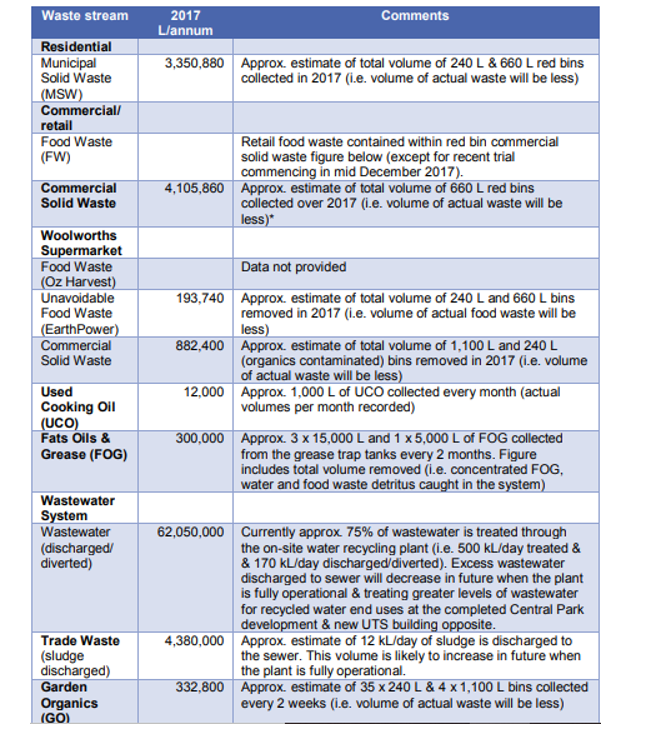
Figure 1: volume of waste stream collection and discharge
(Source: case study)
The organic waste flows discussion helped in analysing the existing and assumed data volume of the organic waste stream available in the current situation. This helped in developing appropriate measurements of the overall volume of the organic waste stream that can be implemented in the organic waste management system.
As cited by Bundhoo (2018), an investigation was implemented by the team members for developing an appropriate pre-plan for the project effectively. The investigation helped in utilizing and analysing the volume of food wastes available in Central Park that are collected from residential and commercial and retails. Apart from that, the investigation conduction plan will help in analysing the volume of trade waste sludge, UCO, GO, sewage, and FOG.
The cost and waste management arrangement plans developed for the project in the pre-project will help in conducting the organic waste management system successfully. The data collected about the organic waste flow helps the project members for analysing the cost of magnet arrangements requirements for developing the project successfully.
The evaluation of this procedure in the development of a pre-project help of organic waste management system. As per the view of Susilawati et al. (2017), the developing criteria helped the team members in identifying possible methods and roadmaps for making arrangements of the organic waste stream with moderate cost and with major benefits. Appropriate development of cost and management arrangements will help in conducting a successful project of organic waste management plan in Central Park.
The pre-project plan helped in proposing the effective technical options that can be implemented in developing the project successfully. This procedure planning helps in developing technological advancements in the project plan of organic waste management in Central Park. As cited by Yukalang et al. (2018), initially technical options were opted for developing the treatment, collection, and transportation options of the organic waste management system.
For evaluating these options with effective technical advancement, the previous tasks that were taken place before the introduction of the organic waste management system are analysed. The pre-project plan focused on developing the existing tasks with effective implementation of technological advancement for the successful conduction of the project.
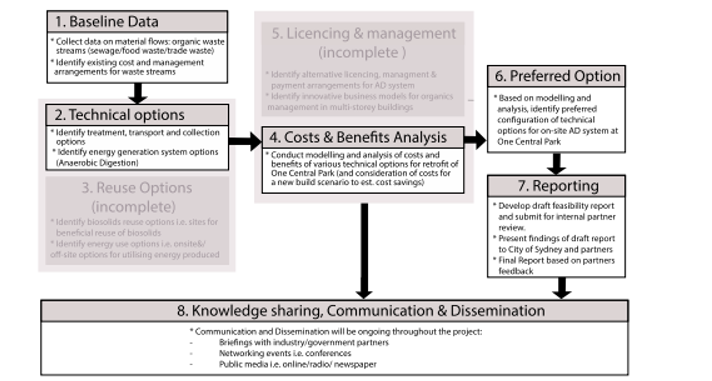
Figure 2: Task approaches included in the project plan
(Source: Turner et al. 2018)
The energy generation system options are focused on development with an effective adaptation of technological advancement which will be based on AD. The calculations and measurements of the project plan are developed with suitable options. As opined by Hettiarachchi et al. (2018), the potential help in opting for the potential energy generation options will help in developing the benefit factors obtained from the project plan.
The generation of energy, such as biogas, will help in developing different essential factors of the growth of Central Park. The inclusion of these effective approaches in the pre-project plan will help in executing the project successfully and attains maximum benefits and advantages from the plan for developing the organic waste management system of Central Park.
The reuse approaches developed in the project plan are incomplete and the remembers are trying to aim to complete it successfully for developing the plan. The development of reuse options will help in developing the aims and objectives of the project of an organic waste management system.
As per the view of Ouda et al. (2018), the different reuse options that are included in the pre-project plan can be digestate created with an application of AD. The utilization of the energy produced with a pre-project plan with technical advancements can be used in the reuse option for developing the organic waste management system project effectively.
The development of reuse options is required and for that improvement of a timeframe of the project, the plan is to change effectively. The volume of the organic stream has to be evaluated with the time frame of the reuse options at Central Park.
This is developed for improving the cost and management arrangements of the project plan. However, the objectives of the reuse options are partially achieved with the pre-project plan and thus effective opportunities are available in this option. The utilization of effective opportunities in the future will help in developing the organic waste management system gradually with improvised reuse options of effective waste.
The fourth segment of the pre-project plan is costs and benefits that make an effective evaluation of the quantifiable and non-quantifiable costs and benefits that can be attained in the project. As per the view of Fredrick et al. (2018), the effective option is attained with effective utilization of technical advancement options conducted in the pre-project plan effectively.
The data available in the project are utilized for mitigating the limitations and attain maximum profit from the project of an organic waste management system.
The fifth segment of the project plan is licensing and management which is in progress in the pre-project plan and it requires effective development for appropriate completion of this option. This can be attained effectively with potential support of the business models implemented with the effective approaches developed by the project.
As cited by Sayadi-Gmada et al. (2019), effective support can be achieved with the utilization of AD at the organic waste management stream developed in the site of Central Park. However, the disruption of this option is attained due to major hurdles of the waste contractors. Attainment of this hurdle was unexpected in the project plan and resolving this hurdle was not developed within the timeframe of the project plan. Therefore, this is evaluated as a future developing aspect of this project plan.
Improvement of this opinion will help in developing the cost and management arrangements of this project plan and improve operations of the organic waste management system. The sixth option of the pre-project plan is to identify and develop preferred options for the project of an organic waste management system. The preferred option evaluation of the pre-project plan helps in evaluating the model of cost and benefits.
As opined by Bahers, and Giacchè (2019), analysis of the cost and benefits models helps in improving the preferred configuration of attaining technical advancement for the project of Central Park. Then, the final reporting of the pre-project plan is evaluated for analysing the effective outcomes of the organic waste management plan. The final reporting can be developed with an effective analysis of CoS feedbacks.
The last segment of the pre-project plan is focused on improving the requirements of knowledge sharing, dissemination, and communication of the project. The presentation of the project of the organic waste management system will focus on the effective sharing of project outcomes on international platforms.
As per the view of Lee et al. (2019), this can be effectively developed with the conduction of workshops in the international platform for demonstrating project benefits to the site Central Park. The survey results and effective lessons developed through the project work completion can be illustrated effectively through this option of a pre-project plan.
2.2. Project Execution
The project of water and waste management and maintaining the development of the natural environment focuses on the execution of the project based on the potentiality of the anaerobic digester system. According to Lion et al. (2017), project executive it challenges through comparative scale based on different types of waste steam.
This project has the potential to be executed for used cooking oil, grease and factories, food waste of commercial, residential, and retail, and inclusive of organic gardens.
The project focuses on developing an innovative approach for improving the management of organics that are present in waste streams. The project is executed with effective technology advancements that are developed with technological advancement implementation of the transportation process of waste management. As per the view of Turner et al. (2018), the project execution has developed a wastewater treatment plant for improving the recycling process.
The recycling and waste management procedure helps in developing the production of renewable energies such as biogas for effective use on sites. Accordingly, reuse of digest which is rich in nutrients is implemented in the lands for developing the land structure effectively.
The project execution is necessary and beneficial for mitigating the complexities and challenges in Central Park for future progress. The project executed in Central Park was built in 5.8 hectares of Central Park. The project was completed in the time period of 2018 and during that time it was compressed into 11 different buildings of the Central Park. The feasibility and availability of resources were analysed during the execution of the project in the central park (Case Study).
The existing buildings available in Central Park are used effectively for performing the operation of waste management and recycling. The existing buildings were converted for using organic waste management systems effectively with innovative incorporations. Effective and beneficial organic waste management practices were developed in new buildings for the effective functioning of waste management procedures.
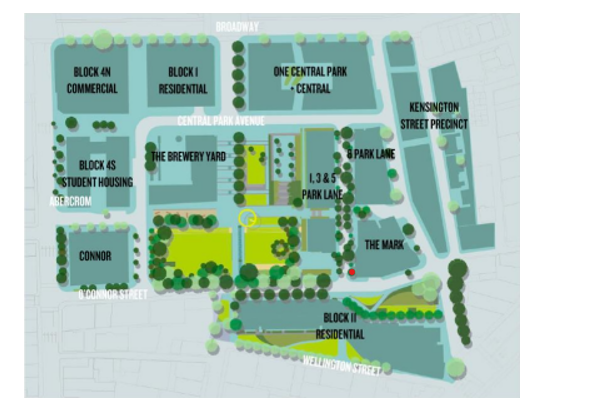
Figure 3: Site of Central Park
(Source: Case study)
The project was executed by analysing various crucial factors of the organic waste management system. The types and volumes of organic waste management streams are evaluated effectively for differencing the operations in different buildings. The organic waste treatment was developed by producing essential necessities such as energy, biogas, and digestate generation and usage.
As cited by Lin et al. (2018), the management arrangements are developed effectively by analysing the cost, benefits, and pricing structure of the entire plant effectively. The project was effectively developed by utilizing the baseline of the project effectively for successful executions. The improvement of the organic waste management system by attaining a decrease in the food waste obtained from different commercial sectors and residentials for maintaining an effective urban environment.
The organic waste flow of the project is evaluated in Central Park for making effective arrangements for the organic waste management system. The volume of the organic waste present in Central Park is evaluated effectively for analysing the overall collection present in Central Park.
The organic waste flow residential and different commercial and retails platforms are evaluated for making appropriate arrangements for executing the project effectively. As opined by Nordahl et al. (2020), the volume of food waste is different from other wastes such as sewage and sludge waste. The treatment of food waste and slide waste are implemented differently in the Central Park of organic waste management. The cost and other management arrangements are effectively developed for preparing a successful project on organic waste management in Central Park.
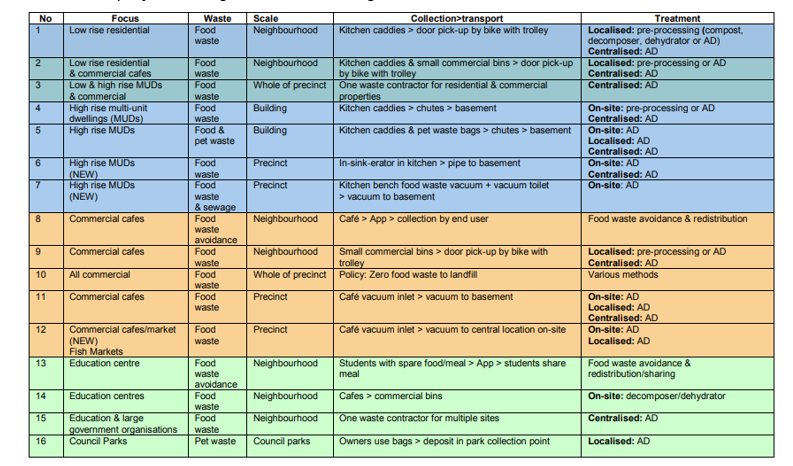
Figure 4: identified organic waste
(Source: Case study)
The collection of organic waste is identified parallel with the organic flow for preparing effective cost arrangements and other management arrangements for successfully operating the waste management system in Central Park. The operation of the organic waste management system was disrupted because due to the overflow of organic waste, the waste was implemented in landfills and due to the development of methane gas and leachate which is harmful to the environment.
As per the view of Leow et al. (2018), the project execution focused on reducing the additional amount of waste generated from different residential and retail shops for avoiding disruption of the organic waste management system. The initiatives developed in project management were improved with the implementation of technological advancement.
The project execution is developed with the effective implementation of innovative solutions for capturing the local area of Central Park. The project focused on evaluating the holistic view of the city with the development of an organic waste stream. As cited by Rasmeni, and Madyira (2019), project execution is implemented by focusing on avoiding diverting organic waste from food waste. The opportunities of the treatment plan help in demonstrating the treatment and reuse scales of the project of an organic waste management system.
The intensity of different organics that are implemented in the precinct area of Central Park is illustrated with effective options of project execution. As opined by Upper (2020), the feasibility and development of dense urban settings are developed in the project plan of an organic waste management system. The trails of food waste in different locations of Central Park are explored for evaluating opportunities for project execution of organic waste management systems.
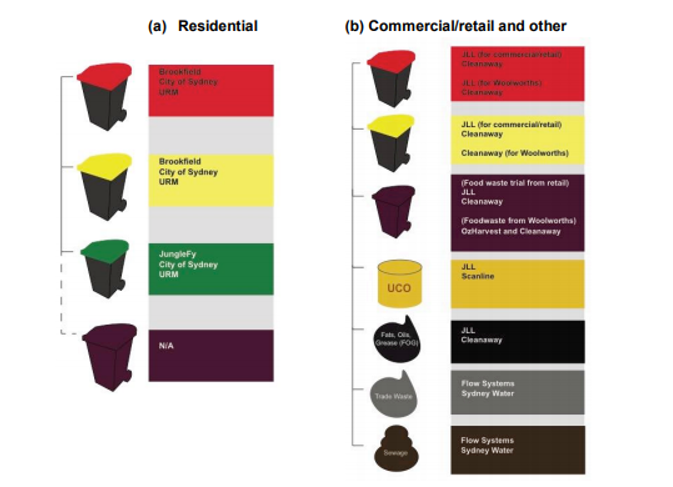
Figure 5: visual summary of the organic waste stream
(Source: case study)
The project is executed with the implementation of a common process of the wastewater sector with the adoption of AD. As per the view of Keske et al. (2018), unexplored opportunities of the project are developed for managing organic waste. The AD of the project is situated in the basement which helps in improving the project operations effectively.
The project execution demonstrates effective treatment opportunities that can be developed with CoS investigation. This helps in developing waste management solutions for the effective challenges that are associated with this project due to urban densification.
2.3. Post Project Analysis
The overall project focuses on solving the challenges regarding water and waste management and maintaining the development of the natural environment. According to Turner, et al. (2018), this feasibility project analyses the opportunity issues and consideration through SWOT analysis. The cultural and social dimensions focus on the feasibility of anaerobic digester at the Central Park Precinct Organics Management project.
This project is associated with the arrangement of complexes to identify different types of waste organics streams and the importance of changes in practices of socio cultures. The technological dimensions have several scopes to overcome the challenges through this study. It included the anaerobic digester system and extensive international and national wastewater and food waste application.
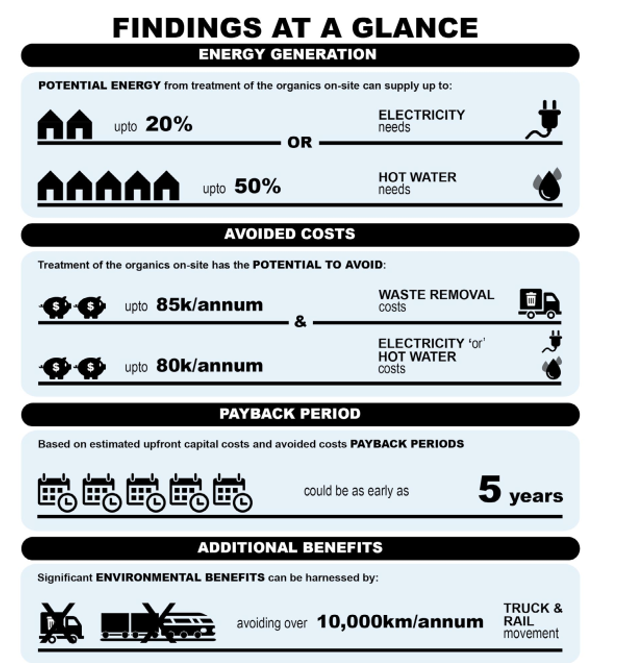
Figure 6: Post-project benefits
(Source: Case study)
The environmental dimension also analyses several factors to manage to provide proper solutions to avoid the threat of organic product waste management systems (Lavallee, and Cotrufo, 2020). On the other hand, the economical dimension focused on the implementation of several technological improvements and innovations to improve the non-monetizable benefits. The political dimension helps to provide several opportunities and benefits to reduce significant barriers.
SWOT Analysis:
| Strength
Thinking of recycling the waste into convertible energy is itself a strength right now where the Earth is suffering severe suffocation by us. This project is to help people and for the sack of home and to live like living (Peng, and Pivato, 2019). Central Park Precinct Organics try to get the energy from the wastage by undermining some recycling process to have back the energy for reuse. It satisfies two entities together by having recycled them and after it the remains would be used as fertilizer. |
Weakness
The casual thinking of the people of getting produced more wastage as a backup plan is there to help them recycle, drive them to produce more garbage. An assumption of sudden flaws in producing energy can hamper the image of the company (Badmus, and Petrik, 2018). |
| Opportunity
In order to contribute a bit to the world environment with no pollution, this company takes steps to the whole renovation of its people. The company’s objective can encourage people to take initiatives for the noble cause of saving the world (Lakhran, and Ahir, 2020). |
Threat
The step to a change can motivate others to do the same which can be threatening for Central Park Precinct Organics as the others would be counted as competitors (Alloul, and Vlaeminck, 2018). |
Table 1: SWOT Analysis
(Source: Created by Researcher)
PESTLE Analysis
| Factors | Discussion |
| Political | The political side of the project here refers to the political condition of Australia. This is a country with a very stable democratic structure since 1901. This kind of a scenario is extremely favourable for any project (Lavallee, and Cotrufo, 2020). |
| Economic | The economy of a country influences all the other decisions and projects. This country has a relatively very high economic growth rate. The service sector dominates the economy thereby contributing a major share of the G.D.P. Thus there is a high availability of various professionals who can be fruitfully used for various stages of the project (Alloul, and Vlaeminck, 2018). |
| Social | The country faces some of the social issues which are common almost anywhere in the world like climate change, family breakdowns etc. But in this case the social issue of population control has been given prior importance. This is so because this project was originally done keeping in mind the energy needs of the growing population as well as keeping the city clean.(Badmus, and Petrik, 2018) |
| Technological | Australia is technologically very sound. The country is very much into hi-tech technology like AI, robotics, data analytics and others. This helps a lot in any project as there will be no dearth of such expert professionals to help implement certain essentialities (Peng and Pivato, 2019). |
| Legal | Australia believes in equal access to basic needs for all of its citizens. This has been a driving force for the project as it aims to meet the growing needs of electricity for its growing population. The country also ensures fair business which is an added advantage for any organisation. Lastly the law pledges to protect the rights of both the businesses and the consumers (Lakhran and Ahir 2020). |
| Environmental | This country is facing some of the major issues of environmental concern since the European settlement. 13% of the original vegetation of the country has been lost. This project will do its part in land regeneration by supplying the essential manure. The problem of deforestation has been a major concern. This problem can also be somewhat addressed by the above project as it can try to solve this problem as well (Chandra and Navsare 2019). |
Table 2: PESTLE Analysis
(Source: Created by Researcher)
3. Conclusion
The study analysis demonstrates the effective development of an organic waste management system in Central Park. The analysis of the study is based on illustrating the Pre-project section and then Project execution and lastly Post Project analysis. The different segments of this analysis have focused on stages of the project of an organic waste management system of Central Park.
The project is aimed towards developing the effective operations and structure of the waste management system and recycling of waste. The project was developed in Central Park to improve the organic waste streams of different segments. The different segments of the waste stream are focused on food waste, trade waste, Sewage, Used Cooking oil, and sewage waste.
The study analysis is focused on developing effective innovative solutions by using technical advancement for treating the waste developed from organic materials. The project introduces various potential management solutions to the Central Park managing local and various scales with effective management and treatment opportunities.
Exploration of feasibility systems in the Urban settings are evaluated with effective progress and operations of the project of an organic waste management system. The procedure of the project develops the wastewater system and organic waste from different locations.
Recommendations
The effective organic waste management system requires effective analysis of the waste availability of particular locations. The forecasted waste production can be effectively different from the actual waste and thus it can disrupt the function and operations of the waste management system.
Therefore, for the effective development of the waste management system, a comparison between the actual waste and forecasted waste should be evaluated for appropriate production of the waste management system. The costing arrangement and other operating arrangements should be developed by estimating the implementation of SWAP. This will help in obtaining appropriate legal contracts of the clients and the contractors for avoiding legal disruptions.
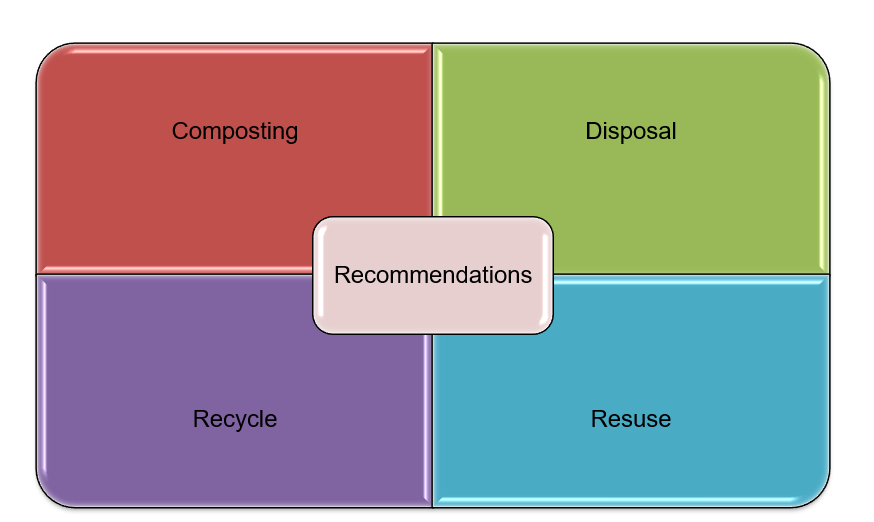
Figure 8: Recommendations
(Source: MS Word)
Appropriate estimation of the waste produced that can be recovered, recycled, and reused should be differentiated for developing the management system of waste. The plans of the project should be evaluated timely and after the progress of the plant successfully, appropriate changes should be adopted after 6 months.
This will help in attaining the conditioned growth of the plant and develop the waste carrier of the waste management system. Lastly, the hazardous wastes that are collected should be differentiated for decreasing the possibility of developing greenhouse gases that are harmful.
Reference
Alloul, A., and Vlaeminck, S.E., 2018. Capture–ferment–upgrade: A three-step approach for the valorization of sewage organics as commodities. Environmental science & technology, 52(12), pp.6729-6742. Available at: https://www.researchgate.net/profile/Abbas-Alloul/publication/325208616_Capture_-_Ferment_-_Upgrade_A_three-step_approach_for_the_valorization_of_sewage_organics_as_commodities/links/5f846fc0299bf1b53e210f70/Capture-Ferment-Upgrade-A-three-step-approach-for-the-valorization-of-sewage-organics-as-commodities.pdf
Badmus, K.O., and Petrik, L., 2018. Treatment of persistent organic pollutants in wastewater using hydrodynamic cavitation in synergy with advanced oxidation process. Environmental Science and Pollution Research, 25(8), pp.7299-7314. Available at: https://repository.uwc.ac.za/bitstream/handle/10566/3439/Badmus_Treatment-of-persistent_2018.pdf?sequence=1&isAllowed=y
Bahers, J.B. and Giacchè, G., 2019. Towards a metabolic rift analysis: The case of urban agriculture and organic waste management in Rennes (France). Geoforum, 98, pp.97-107. Available at: https://www.sciencedirect.com/science/article/am/pii/S0016718518303208
Bong, C.P.C., Ho, W.S., Hashim, H., Lim, J.S., Ho, C.S., Tan, W.S.P. and Lee, C.T., 2017. Review on the renewable energy and solid waste management policies towards biogas development in Malaysia. Renewable and Sustainable Energy Reviews, 70, pp.988-998. Available at: https://fardapaper.ir/mohavaha/uploads/2017/09/3221264845612154454156.pdf
Bundhoo, Z.M., 2018. Solid waste management in least developed countries: current status and challenges faced. Journal of Material Cycles and Waste Management, 20(3), pp.1867-1877. Available at: https://www.researchgate.net/profile/Gratien-Twagirayezu/post/What_are_the_best_methods_to_collect_and_analyze_the_solid_wastes_produced_from_the_school_campus/attachment/6070f7d10f39c700014062e3/AS%3A1010847400857600%401618016209701/download/Solid+waste+management+in+least+developed+countries+current+status.pdf
Chandra, M.S., and Navsare, R.I., 2019. Production and potential of ancient liquid organics panchagavya and kunapajala to improve soil health and crop productivity: A review. Journal of Pharmacognosy and Phytochemistry, 8(6), pp.702-713. Available at: https://www.phytojournal.com/archives/2019/vol8issue6/PartL/8-5-377-403.pdf
Ding, G.K.C., 2017. Wastewater treatment and reuse-The future source of water supply. Encyclopedia of Sustainable technologies. Available at https://opus.cloud.lib.uts.edu.au/bitstream/10453/121416/4/Wastewater%20treatment%20%28Final%29.pdf
Fredrick, M., Oonyu, J.C. and Sentongo, J., 2018. Influence of education on the solid waste management practices of communities in Kampala city. J. Environ. Waste Manag, 5, pp.261-274. Available at: https://cees.mak.ac.ug/sites/default/files/JosephC.pdf
Hartoonian, G., Gollings, J. and Vargas, R., 2020. UTS Central FJMT. Architecture Australia, 109(3), p.46. available at https://researchprofiles.canberra.edu.au/files/33794995/UTS_Central_FJMT.pdf
Hettiarachchi, H., Meegoda, J.N. and Ryu, S., 2018. Organic waste buyback as a viable method to enhance sustainable municipal solid waste management in developing countries. International journal of environmental research and public health, 15(11), p.2483. Available at: https://www.mdpi.com/1660-4601/15/11/2483/pdf
https://opus.lib.uts.edu.au/bitstream/10453/118506/1/Turneretal2017SWC-EPA-PUPscopingstudy.pdf
Keske, C.M., Mills, M., Godfrey, T., Tanguay, L. and Dicker, J., 2018. Waste management in remote rural communities across the Canadian North: Challenges and opportunities. Detritus, 2(1), pp.63-63. Available at: https://escholarship.org/content/qt7nf7t47t/qt7nf7t47t.pdf
Lakhran, L. and Ahir, R.R., 2020. In-vivo evaluation of different fungicides, plant extracts, biocontrol agents and organics amendments for management of dry root rot of chickpea caused by Macrophominaphaseolina. Legume Research-An International Journal, 43(1), pp.140-145. Available at: http://arccarticles.s3.amazonaws.com/arcc/Attachment-at-accept-article-LR-3939.pdf
Lavallee, J.M., and Cotrufo, M.F., 2020. Conceptualizing soil organic matter into particulate and mineral‐associated forms to address global change in the 21st century. Global Change Biology, 26(1), pp.261-273. Available at: https://onlinelibrary.wiley.com/doi/pdf/10.1111/gcb.14859
Lee, C.K.M., Ng, K.K.H., Kwong, C.K. and Tay, S.T., 2019. A system dynamics model for evaluating food waste management in Hong Kong, China. Journal of Material Cycles and Waste Management, 21(3), pp.433-456. Available at: https://www.researchgate.net/profile/Kam-Kh-Ng/publication/328409837_A_system_dynamics_model_for_evaluating_food_waste_management_in_Hong_Kong_China/links/5e8adda6299bf13079800d98/A-system-dynamics-model-for-evaluating-food-waste-management-in-Hong-Kong-China.pdf
Leow, C.W., Van Fan, Y., Chua, L.S., Muhamad, I.I., Klemes, J.J. and Lee, C.T., 2018. A review on application of microorganisms for organic waste management. Chemical Engineering Transactions, 63, pp.85-90. Available at: https://www.researchgate.net/profile/Yee-Fan/publication/344267552_A_Review_on_Application_of_Microorganisms_for_Organic_Waste_Management/links/5f620304299bf1d43c07a947/A-Review-on-Application-of-Microorganisms-for-Organic-Waste-Management.pdf
Lin, L., Xu, F., Ge, X. and Li, Y., 2018. Improving the sustainability of organic waste management practices in the food-energy-water nexus: A comparative review of anaerobic digestion and composting. Renewable and Sustainable Energy Reviews, 89, pp.151-167.Avaialble at: https://www.sciencedirect.com/science/article/am/pii/S1364032118301023
Lion, S., Michos, C.N., Vlaskos, I. and Taccani, R., 2017. A thermodynamic feasibility study of an Organic Rankine Cycle (ORC) for heavy-duty diesel engine waste heat recovery in off-highway applications. International Journal of Energy and Environmental Engineering, 8(2), pp.81-98. Available at: https://link.springer.com/content/pdf/10.1007/s40095-017-0234-8.pdf
McLean, L. and Roggema, R., 2019. Planning for a prosumer future: The case of Central Park, Sydney. Urban Planning, 4(1), pp.172-186. Available at https://www.ssoar.info/ssoar/bitstream/handle/document/61545/ssoar-up-2019-1-mclean_et_al-Planning_for_a_Prosumer_future.pdf?sequence=1
Nordahl, S.L., Devkota, J.P., Amirebrahimi, J., Smith, S.J., Breunig, H.M., Preble, C.V., Satchwell, A.J., Jin, L., Brown, N.J., Kirchstetter, T.W. and Scown, C.D., 2020. Life-Cycle Greenhouse Gas Emissions and Human Health Trade-Offs of Organic Waste Management Strategies. Environmental science & technology, 54(15), pp.9200-9209. Available at: https://pubs.acs.org/doi/pdf/10.1021/acs.est.0c00364
Ouda, O.K.M., Peterson, H.P., Rehan, M., Sadef, Y., Alghazo, J.M. and Nizami, A.S., 2018. A case study of sustainable construction waste management in Saudi Arabia. Waste and Biomass Valorization, 9(12), pp.2541-2555. Available at: https://www.academia.edu/download/55327221/s12649-017-0174-9.pdf
Peng, W. and Pivato, A., 2019. Sustainable management of digestate from the organic fraction of municipal solid waste and food waste under the concepts of back to earth alternatives and circular economy. Waste and biomass valorization, 10(2), pp.465-481. Available at: https://www.researchgate.net/profile/Wei-Peng-18/publication/319566717_Sustainable_Management_of_Digestate_from_the_Organic_Fraction_of_Municipal_Solid_Waste_and_Food_Waste_Under_the_Concepts_of_Back_to_Earth_Alternatives_and_Circular_Economy/links/59b936a5aca27241618d200d/Sustainable-Management-of-Digestate-from-the-Organic-Fraction-of-Municipal-Solid-Waste-and-Food-Waste-Under-the-Concepts-of-Back-to-Earth-Alternatives-and-Circular-Economy.pdf
Rasmeni, Z.Z. and Madyira, D.M., 2019. A review of the current municipal solid waste management practices in Johannesburg City townships. Procedia Manufacturing, 35, pp.1025-1031. Available at: https://www.sciencedirect.com/science/article/pii/S2351978919307772/pdf?md5=e40456cf251b72210bdb23f5b3eaafd0&pid=1-s2.0-S2351978919307772-main.pdf
Sayadi-Gmada, S., Rodríguez-Pleguezuelo, C.R., Rojas-Serrano, F., Parra-López, C., Parra-Gómez, S., García-García, M.D.C., García-Collado, R., Lorbach-Kelle, M.B. and Manrique-Gordillo, T., 2019. Inorganic waste management in greenhouse agriculture in almeria (SE Spain): Towards a circular system in intensive horticultural production. Sustainability, 11(14), p.3782. Available at: https://www.mdpi.com/2071-1050/11/14/3782/pdf
Susilawati, A., Hernani, H. and Sinaga, P., 2017. THE APPLICATION OF PROJECT-BASED LEARNING USING MIND MAPS TO IMPROVE STUDENTS’ENVIRONMENTAL ATTITUDES TOWARDS WASTE MANAGEMENT IN JUNIOR HIGH SCHOOLS. International Journal of Education, 9(2), pp.120-125. Available at: https://www.learntechlib.org/p/208923/article_208923.pdf
Turner, A., Fam, D.M., McLean, L., Zaporoshenko, M., Halliday, D., Buman, M., Lupis, M. and Kalkanas, A., 2018. Central Park precinct organics management feasibility study. Available at https://opus.cloud.lib.uts.edu.au/bitstream/10453/130784/1/Central%20Park%20Feasibility%20Final%20Report%20December%202018.pdf
Turner, A., Fam, D.M., McLean, L., Zaporoshenko, M., Halliday, D., Buman, M., Lupis, M. and Kalkanas, A., 2018. Central Park precinct organics management feasibility study. Available at: https://opus.cloud.lib.uts.edu.au/bitstream/10453/130784/1/Central%20Park%20Feasibility%20Final%20Report%20December%202018.pdf
Turner, A., Fam, D.M., McLean, L., Zaporoshenko, M., Halliday, D., Buman, M., Lupis, M. and Kalkanas, A., 2018. Central Park precinct organics management feasibility study. Available at https://opus.cloud.lib.uts.edu.au/bitstream/10453/130784/1/Central%20Park%20Feasibility%20Final%20Report%20December%202018.pdf
Turner, A.J., Fam, D., Madden, B. and Liu, A., 2017. Pyrmont-Ultimo Precinct (PUP) Scale Organics Management Scoping Study. Available at: https://opus.lib.uts.edu.au/bitstream/10453/118506/1/Turneretal2017SWC-EPA-PUPscopingstudy.pdf
Upper, S.S., 2020. OPERATIONAL WASTE MANAGEMENT PLAN FOR A PROPOSED MIXED-USE DEVELOPMENT AT. Available at: https://planningapplication.s3.eu-west-1.amazonaws.com/projects/1036/documents/Operational%20Waste%20Managment%20Plan.pdf
Yukalang, N., Clarke, B. and Ross, K., 2018. Solid waste management solutions for a rapidly urbanizing area in Thailand: Recommendations based on stakeholder input. International journal of environmental research and public health, 15(7), p.1302. Available at: https://www.mdpi.com/1660-4601/15/7/1302/pdf
Know more about UniqueSubmission’s other writing services:

